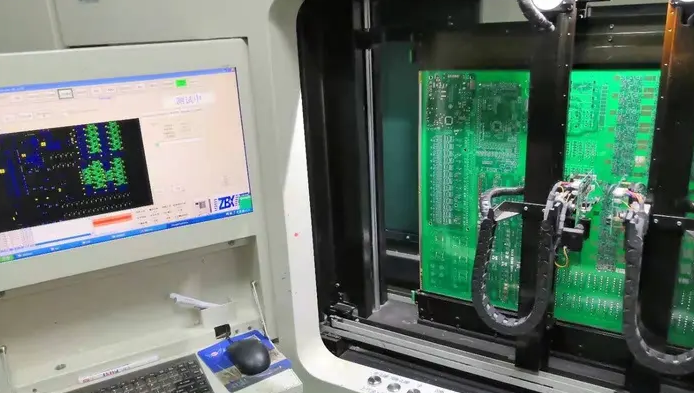- 22
- Mar
Flying Test Concept, advantages and disadvantages of PCB Flying Test

Flying Test Concept, advantages and disadvantages of PCB Flying Test
Flying test is one of the methods to check the electrical function of PCB (open and short circuit test). Flying needle tester is a system for testing PCB in manufacturing environment. It is not used in all traditional bed of on-line testing machines-Nails) interface, flying needle test uses four to eight independently controlled probes to move to the point-to-point test of the components under test. The UUT (unit under test) is transported to the test station by belt or other UUT transmission system
기계 내부. 그런 다음 고정된 테스트 기계의 프로브가 테스트 패드와 비아에 접촉하여 테스트 대상 장치(UUT)의 단일 요소를 테스트합니다. 테스트 프로브는 멀티플렉싱 시스템(신호 발생기, 전원 공급 장치 등)과 센서(디지털 멀티미터, 주파수 카운터 등)를 통해 드라이버에 연결되어 UUT의 구성 요소를 테스트합니다. 구성 요소를 테스트할 때 UUT의 다른 구성 요소는 디지털 간섭 판독을 방지하기 위해 프로브를 통해 전기적으로 차폐됩니다.
플라잉 니들 테스트와 픽스쳐 테스트의 차이점
◆ flying needle testing machine is a typical equipment using capacitance method. The test probe moves quickly point by point on the circuit board to complete the test.
◆ 먼저 표준 보드를 배우고 각 네트워크의 커패시턴스 표준 값을 읽습니다.
◆ 먼저 커패시턴스 방식으로 테스트한 다음 측정된 커패시턴스가 규정된 범위를 벗어나면 저항 방식으로 정확하게 확인합니다.
◆ XNUMX선 측정이 가능합니다.
◆ 테스트 속도가 느리기 때문에 소량의 샘플 테스트에만 적합합니다.
장점과 단점:
◆ 검사바늘이 손상되기 쉽다
◆ 느린 테스트 속도
◆ 테스트 밀도가 높고 최소 피치가 0.05mm 이하에 도달할 수 있습니다.
◆ no fixture cost, cost saving.
◆ 내전압은 테스트할 수 없으며 높은 수준의 고밀도 보드 테스트는 위험이 큽니다.
